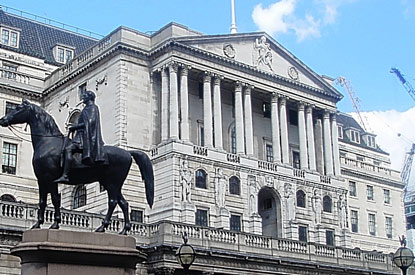 The Bank of England has unveiled plans to tighten buy-to-let lending rules following a consultation which began in March.
The Bank of England has unveiled plans to tighten buy-to-let lending rules following a consultation which began in March.
The Bank’s Prudential Regulation Authority confirmed it will introduce tougher underwriting standards and affordability assessments to make sure borrowers can cover the cost of their mortgage in the event of an interest rate rise.
The PRA said that lenders will be required to set a minimum borrower rate of 5.5% during the first five years of a buy-to-let mortgage contract when assessing affordability, set to be introduced from 1 January next year.
Lenders will also have to take into account annual rent rises of 2% when assessing whether a landlord can afford a property.
Portfolio landlords with four or more rental properties will be subject to stricter checks on income and debt.
The PRA said its actions “are intended to bring all lenders up to prevailing market standards”.
These changes to underwriting standards are expected to reduce the number of new approvals for buy-to-let mortgages by about 10% to 20%.
The BoE has warned that the buy-to-let market is a potential threat to the UK’s economic recovery and that borrowers could be exposed following a downturn, which could hit the wider housing market and economy.
Richard Donnell, insight director at Hometrack, said: “The introduction of underwriting standards for buy-to-let bring this small but important sector of the mortgage market in line with the rest of the market.
“The scale of the impact of this new policy on investors will depend upon how lenders set their interest cover ratios but the net result is that buy-to-let investors will need to inject more equity into their purchases from next year. A number of lenders have taken pre-emptive action ahead of this announcement and already adopted a 145% ICR and 5.5% stress rate, but others will need to develop their own policies.”
“Our analysis shows that if these changes are implemented by lenders across the board then buy to let investors will need to inject a further 10% of the property price across half of rental markets. “
With the 3% extra stamp duty from April that means investors will have to stump up 13% more equity to buy an investment property with a mortgage compared to the start of the year.
“A typical two bed property will require investors having to put in an extra £25,000 to £35,000 of equity for the mortgage – and even more in the lowest yielding and highest value housing markets. The net result will be a further weakening in demand for buy-to-let loans and a move by investors into higher yielding rental markets where the affordability test is easier to pass,” added Donnell.
Paul Smee, CML director general, said: “The new underwriting requirements broadly reflect existing practice, as the PRA says. While the regulator will need to keep the impact of the new requirements under review, we expect the effect to be modest under current market conditions, and we do not anticipate the measures resulting in any shock to the market.”




